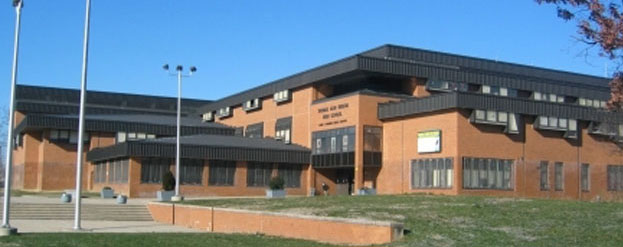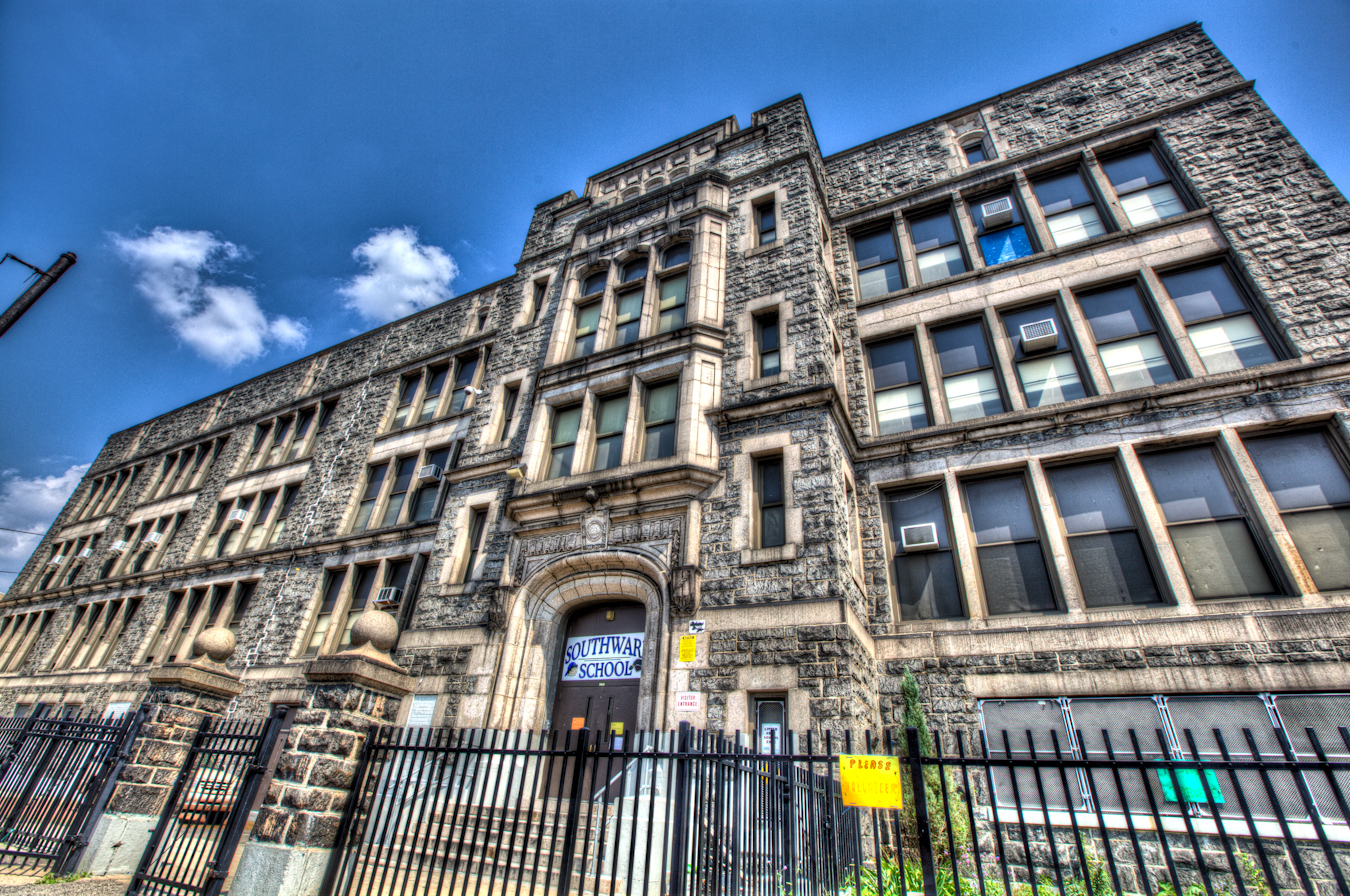First the good news: High school graduation rates in Philadelphia seem to be on the rise, with 64 percent of students graduating within four years.
Now the bad news: Just 64 percent of students graduate high school in Philadelphia within four years, and barely more than that in six years. Less than 20 percent make it to their second year in college. Only 39 percent of students in neighborhood high schools are proficient in reading. Community college remediation rates have skyrocketed, while those same students who graduate with a four-year degree within six years has plummeted, to 15 percent. And employers complain that high school graduates are unprepared for actual jobs after they leave school.

For thousands of students in Philadelphia, high school simply does not work—particularly when they attend the city’s mammoth neighborhood schools like South Philly High (1000 students), or Bartram (1000), or Thomas Edison (1,300). How can they? The large neighborhood high school is a holdover from a different generation—a different century—when the American public school system was first developed, and it seemed an equitable, cost-effective way to prepare all teenagers for the workforce. But this is not the same world. Now, those schools are warehouses of default, the ones that anyone can attend, but that few do by choice. In Philadelphia, this includes immigrants with nascent English skills, students with poor grades, those whose behavior got them expelled from other schools, or those who are not lucky enough to win—or even enter—the charter school lottery.
For thousands of students in Philadelphia, high school simply does not work—particularly when they attend the city’s mammoth neighborhood schools.
“Where you go to high school in Philadelphia really changes the trajectory of your life,” says Kristen Forbriger, Communications Director of the Philadelphia Schools Partnership, who organized this year’s High School Fair. “At the large comprehensive schools, there’s a mentality that you’ve already failed when you walk in the door because you didn’t get into a school of your choice.”
But there may be another way. Starting in 2002, New York City closed 31 large high schools with graduation rates around 40 percent, and instead opened 200 new small high schools open to all students in the district, around 80 percent of whom are economically disadvantaged. MDRC, an education and social policy research group, found that students at the small schools were about 10 percent more likely to graduate high school in four years, 7 percent more likely to achieve a college ready score on the city’s English standardized test, and 8 percent more likely to enroll in college. For the most disadvantaged students, the difference was even more stark: The graduation rate for African American boys was 12.2 percent higher than their peers at large high schools; for special education students, the rate was 13.4 percent higher; even English language learners were more likely to succeed in a small school setting.
“This is still just the beginning,” says John Hutchins of MDRC. “But this wasn’t just at one school, but across the board. We haven’t seen anything else that demonstrates such an impact on kids’ education on such a large scale.”
Would it work here? Philadelphia first toyed with the notion of small high schools in the early 2000s, when then-Superintendent Paul Vallas made an effort to phase out large comprehensive schools in favor of small schools of choice. By 2010, around 25 percent of Philly high schoolers were in small schools—though many of those were magnets, like Science Leadership Academy, with tough admission requirements. The others have had mixed results. In Kensington, for example, the neighborhood high school was broken up in to four themed smaller schools housed in the same building—creative and performing arts; culinary; business; and urban education. All of them continue to be low-performing schools, despite having fewer than 500 students each.
Students at the small schools were about 10 percent more likely to graduate high school in four years, 7 percent more likely to achieve a college ready score on the city’s English standardized test, and 8 percent more likely to enroll in college.
Vallas’s successor, Arlene Ackerman, was not a proponent of small schools, because of the mixed results nationally, and because of the additional cost. MDRC found that New York’s small schools cost about $1,400 more per student, in part because of the economies of scale at a huge school. But under Superintendent Hite, the District has again begun to explore how small high schools might reinvigorate learning for every Philadelphia student.
In September, the School District opened three small innovative high schools. Two of them—The U School and The LINC—were conceived and created by the District’s Office of New School Models, through a $3 million grant from The Carnegie Corporation. They opened in September with 120 9th graders, and will have a total of 450 students in 9th-12th grades when they are full. The other, Building 21, was started by former Philadelphia Youth Network director Laura Shubilla and venture capitalist Chip Linehan, who met in a Harvard education program. Building 21—using startup funds from Next Generation Learning Challenges and Philadelphia Schools Partnership—opened with 140 first-years, and will eventually grow to 650 students. They are all open admissions District schools: They accept students regardless of grades or behavior, primarily from a wide swath of underprivileged North Philadelphia neighborhoods.
In slightly varying ways, all three are experiments in how to better educate urban students. The schools each allow students the opportunity to learn at their own pace; to prove an understanding of concepts not just through tests, but also different types of hands-on projects; to gain real-world experience outside of school; and to form mentor relationships with adults in and out of the school building. The schools’ approaches are different, offering students a choice in how they want to learn—the way the city’s most academically gifted middle schoolers get to choose from an array of magnet schools, like Masterman or SLA.
“We hope that people will choose a school based on the best type of learning for their kid,” says Grace Cannon, director of the District’s New School Models. “We haven’t afforded that conversation for the majority of kids in the District, those who have grade or behavior hurdles. It’s inspiring for people to say, I get to choose something.”
The new schools are experiments in how to better educate urban students.
At Building 21, in the former Ferguson Elementary School building in North Philadelphia, the whole notion of high school has been turned on its head, starting with the first bell: Classes start at 9:20 because of research that shows adolescents perform better if they sleep later in the morning. Monday through Thursday students have two hours of “core concept” classes in math, English, science and history; one hour of math and literacy workshops; 30 minutes with an advisor; 10 minutes of mindfulness training; and two hours of “choice studio,” in which students focus on a real world topic of interest to them—such as performing arts, fitness, flight, cooking, entrepreneurship. Each of the choice studios provides an opportunity to apply academic concepts to a real world activity—like learning the physics of flight—and, as the curriculum develops, internships or community projects. (The culinary students, for example, spend Wednesday afternoons in cooking lessons with Marc Vetri and Jose Garces at The Free Library.) On Fridays, students have an hour of advisory sessions; an hour of core classes; and spend the rest of the day in health class and fitness-related activities, to earn the physical education credits needed for graduation.
“High school for so many kids is a sheer waste of human potential, personal and professional,” says Linehan. “We started Building 21 to answer the question: If you could redesign high school to meet the needs of all learners, including the adults in the building, how would you do that? We are fundamentally changing the way kids experience school to hopefully prepare them better for their personal and professional lives.”
In Philadelphia, 1,800 students applied for the 380 available spots in the new schools this year—which is probably more a reflection of the need for alternatives than a judgement on their actual merits. The schools opened with a bit of fanfare, and some disappointment: After helping to create the LINC over the last year, principal Saliyah Cruz quit a month into the school year to take a job in Maryland. Cannon and an interim are now running the school, while she searches for a replacement. There have been other stumbles, too. At Building 21, for example, Linehan says they underestimated how hard it would be to embrace a completely new school structure, and have had to rethink how they explain their philosophy to students and teachers. But those growing pains—which will likely continue for years—are part of any change. Over the last year, Cannon has been producing a manual for how they opened the schools, including academic studies and research culled from visits to schools around the country. Now her team is meticulously documenting the progress of the schools, including the failures. Her hope is that other schools—whether big or small—can learn from the successes and failures of the new models.
“We are holding these schools to a really high standard because we think young people rise to a challenge,” says Cannon. “But these are also brand new ideas. Some things will work great; others won’t. There is no shame in that—all of it is part of learning.”
It is way too early to judge the success of the new schools—or even if their concepts can translate into an actual classroom. Even the evidence from New York is early, and not definitive. On the other hand: We can’t do any worse.
Clarification: Kristen Forbriger’s quote has been slightly altered to better reflect her intended meaning.
Header photo: Jack Dugan




